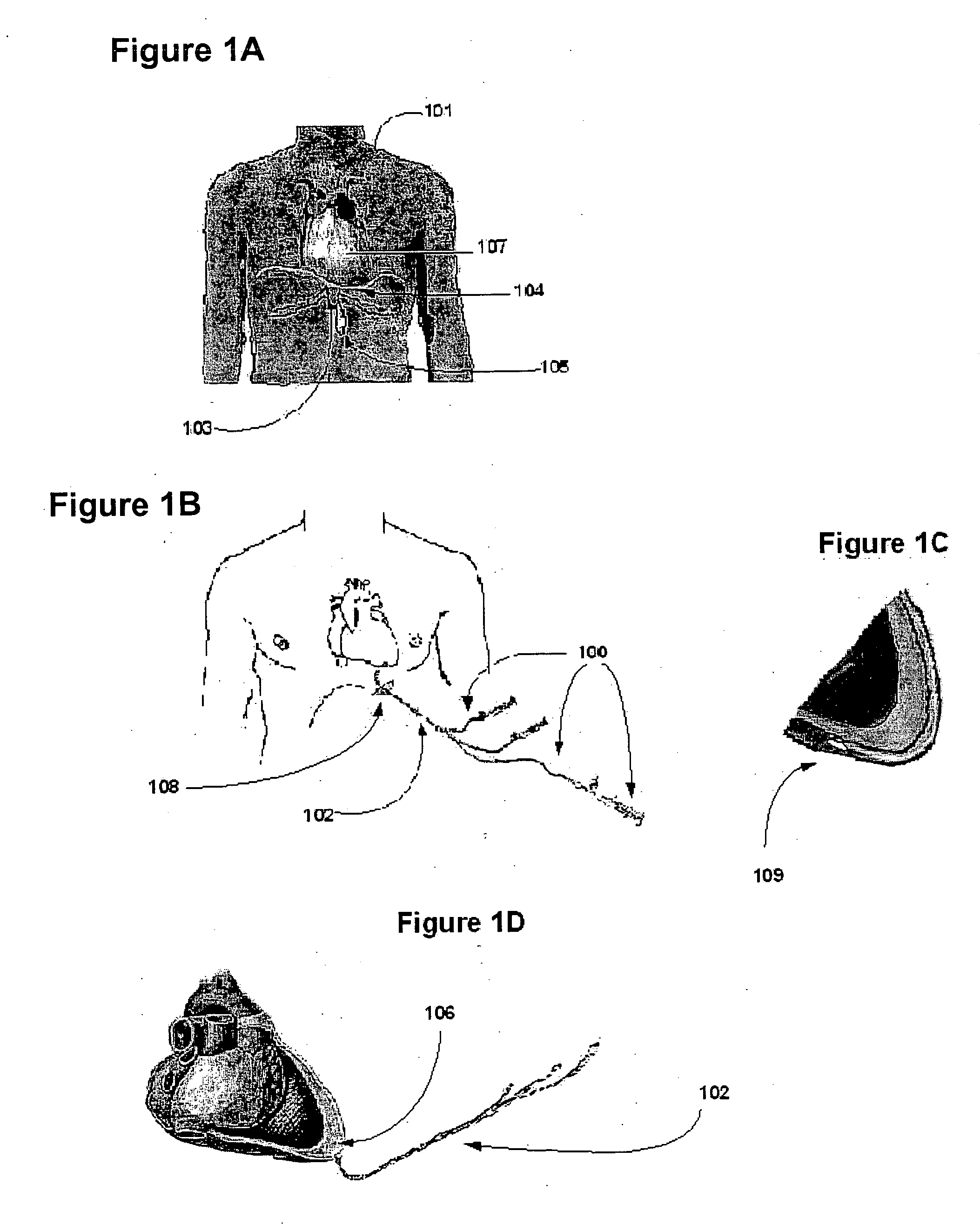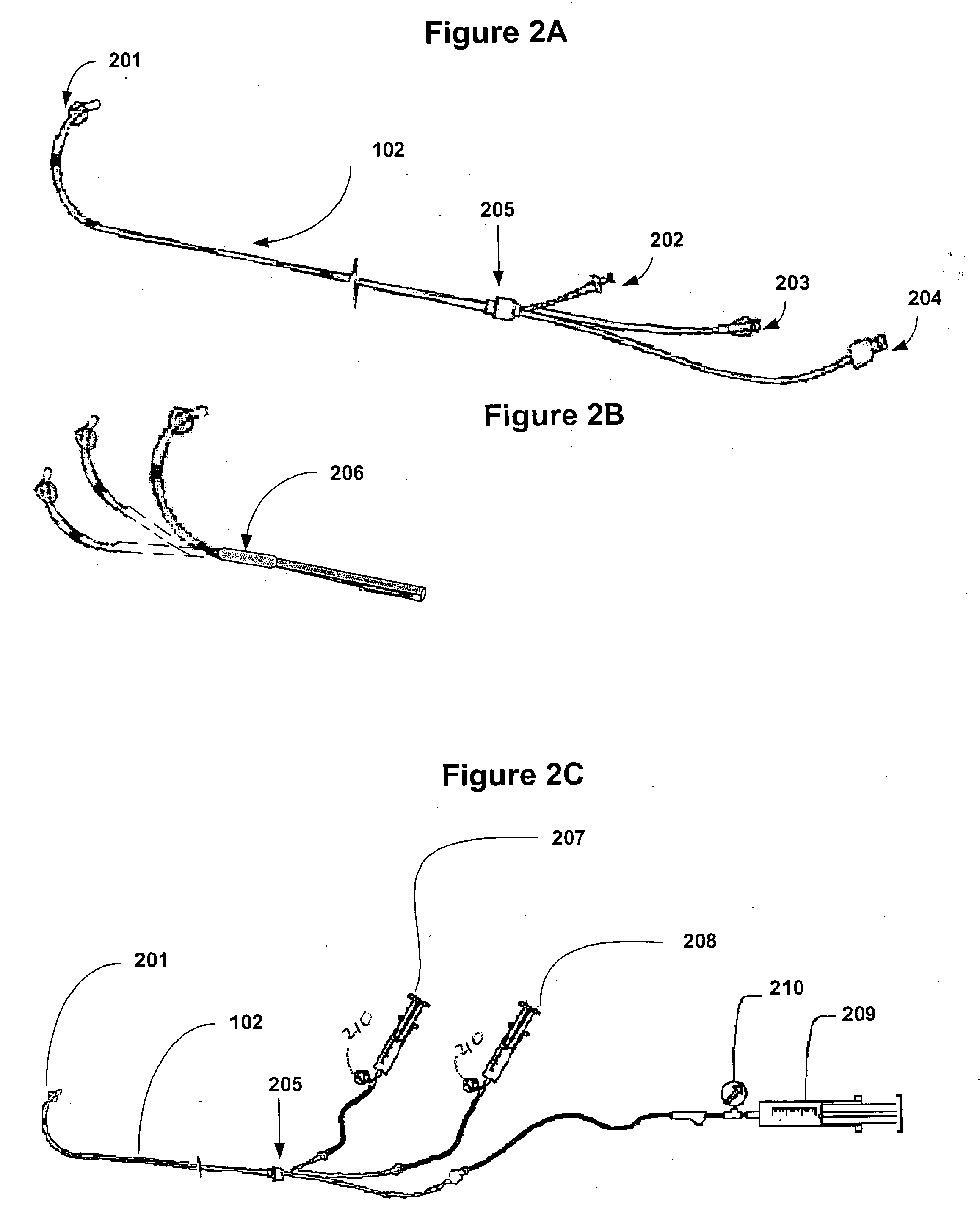Biodegradable pericardia constraint system and method
a pericardia constraint and biodegradable technology, applied in the field of biodegradable pericardia constraint system and method, can solve the problems of depressed ventricular function, high wall stress within and around the infarct, and abnormal ventricular wall motion
- Summary
- Abstract
- Description
- Claims
- Application Information
AI Technical Summary
Benefits of technology
Problems solved by technology
Method used
Image
Examples
Embodiment Construction
[0023]FIG. 1A, B, C, D illustrates the treatment of a patient 101 with the system 100 for injection of BES into the pericardial sac of the heart. The distal end of injection cannula 102 is partially inserted into the pericardial sac of the heart 107. Cannula 102 crosses the patient's skin in the xiphoid area 103 via subxiphoidal incision 105. The diaphragm 104 is incised during surgery down to the pericardial surface. Through this incision 108, the pericardium 107 may be easily visualized and a small incision or a puncture 109 is made in pericardium to accommodate a cannula insertion. The distal tip of the cannula 102 has an opening and is in fluid communication with the pericardial (also called intrapericardial) space 106. The proximal end of the cannula 102 is connected to the delivery system 100 containing the biodegradable viscoelastic substance such as sterile cross linked collagen gel, balloon inflation media such as saline, and tissue sealant such as BioGlu.
[0024]FIGS. 2 A, ...
PUM
 Login to View More
Login to View More Abstract
Description
Claims
Application Information
 Login to View More
Login to View More - R&D
- Intellectual Property
- Life Sciences
- Materials
- Tech Scout
- Unparalleled Data Quality
- Higher Quality Content
- 60% Fewer Hallucinations
Browse by: Latest US Patents, China's latest patents, Technical Efficacy Thesaurus, Application Domain, Technology Topic, Popular Technical Reports.
© 2025 PatSnap. All rights reserved.Legal|Privacy policy|Modern Slavery Act Transparency Statement|Sitemap|About US| Contact US: help@patsnap.com



